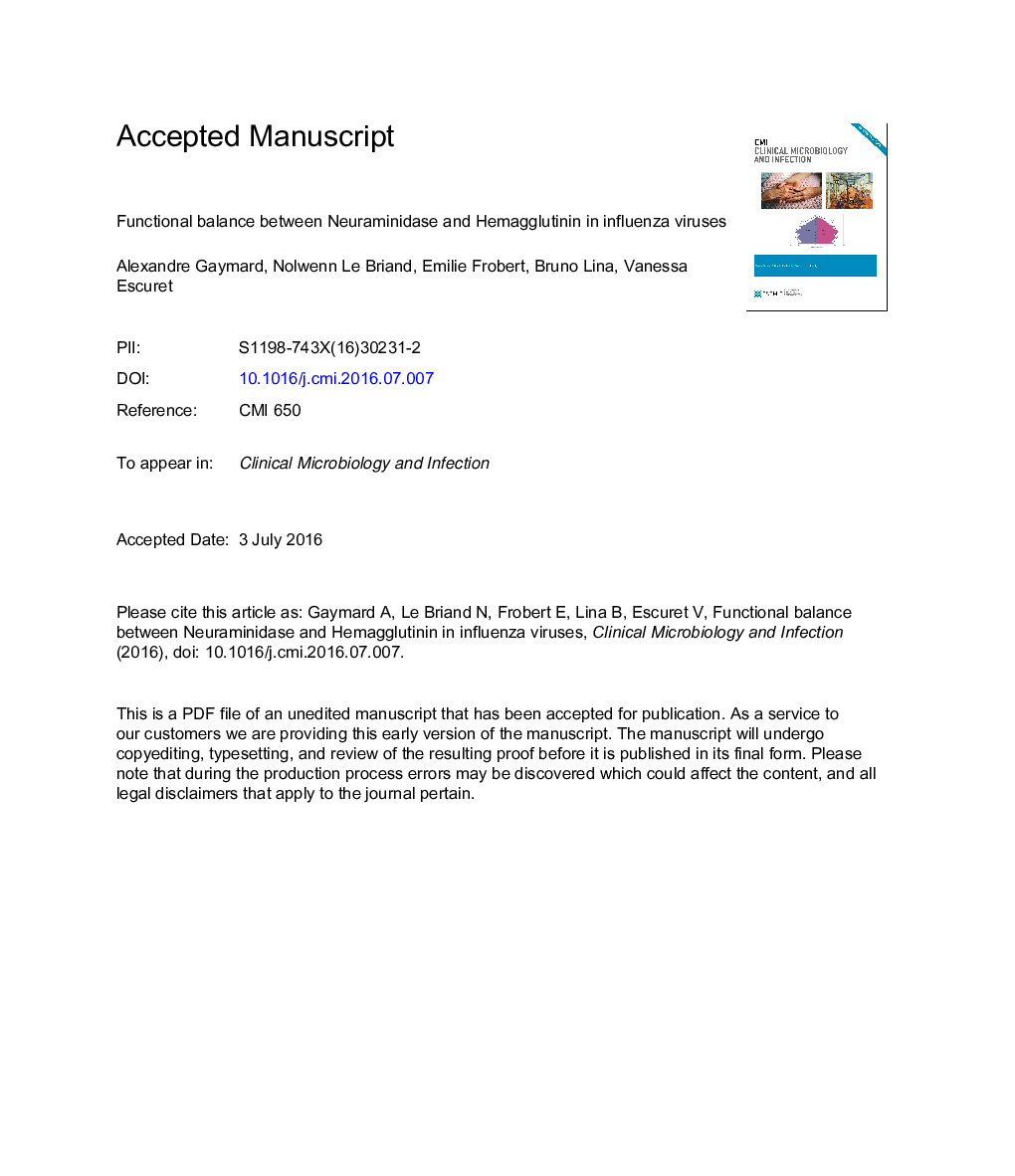| Article ID | Journal | Published Year | Pages | File Type |
|---|---|---|---|---|
| 5671845 | Clinical Microbiology and Infection | 2016 | 27 Pages |
Abstract
Seasonal influenza A and B viruses are important human pathogens responsible for significant morbidity and mortality worldwide. In addition, influenza A zoonotic viruses are a constant pandemic threat. These viruses present two major surface glycoproteins: the haemagglutinin (HA) and the neuraminidase (NA). These two glycoproteins both recognize the sialic acid and have complementary activities, the HA binds the sialic acid through its receptor-binding site, the NA is a receptor-destroying enzyme that cleaves α2-3 and α2-6-linked sialic acids. Therefore, the functional HA/NA balance is a critical factor for a good viral fitness and plays a major role in overcoming the host barrier and the efficiency of sustained human-to-human transmission. Although the two glycoproteins are in constant evolution, the HA/NA balance seems to remain stable in human viruses because an optimal balance is required to maintain good viral fitness. Understanding the evolution of influenza viruses requires an in-depth exploration of the HA/NA balance.
Related Topics
Life Sciences
Immunology and Microbiology
Microbiology
Authors
A. Gaymard, N. Le Briand, E. Frobert, B. Lina, V. Escuret,
